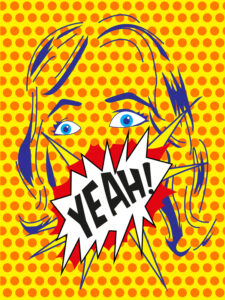
One of the defining characteristics of this genre is its ability to resonate with a broad audience, transcending traditional boundaries and reaching people from all walks of life. Artists working in this genre often draw inspiration from popular icons, trends, and events, using their creativity to reinterpret and reimagine familiar subjects in new and innovative ways.
In recent years, pop culture art has gained widespread recognition and popularity, with exhibitions, galleries, and museums around the world showcasing the work of talented artists working in this genre. From street art and graffiti to high-end galleries and auction houses, pop culture art has become a significant force in the contemporary art world.
Pop culture art encompasses a wide range of forms and mediums, each with its own unique characteristics and impact. From paintings and sculptures to digital art and street installations, artists have employed various mediums to express their creativity creating visually arresting pieces that challenge and provoke viewers.
Paintings have long been a popular medium for pop culture art. Artists like Roy Lichtenstein and Keith Haring have used bold colors and graphic styles to create visually striking works that draw inspiration from comic books and advertising. These paintings often explore themes of consumerism, mass media, and popular icons, capturing the essence of pop culture in a single frame.
Sculptures, on the other hand, offer a three-dimensional representation of pop culture. Artists like Jeff Koons and Takashi Murakami have created larger-than-life sculptures that challenge our perception of everyday objects. These sculptures often blur the line between high art and mass-produced merchandise, making a powerful statement about the commodification of culture.

Street art has also emerged as a prominent form of pop culture art. Artists like Banksy and Shepard Fairey have used public spaces as their canvas, creating thought-provoking murals and graffiti that challenge societal norms and provoke discussion. Street art often acts as a form of social commentary, reflecting the issues and concerns of the communities it is created in.
Ultimately, pop culture art serves as a reflection of our society, capturing the spirit of the times and offering a unique perspective on the world around us. By blending elements of popular culture with artistic expression, pop culture art continues to push boundaries, challenge conventions, and inspire new ways of thinking about the world we live in.
Begin your journey into creating art pieces in your style by learning acrylic painting techniques through online painting courses from an artist known throughout the world.